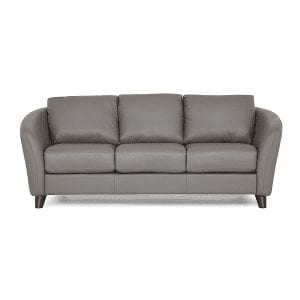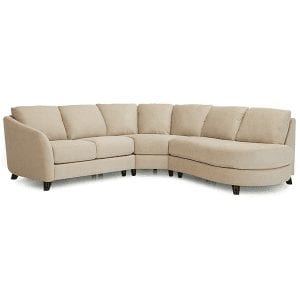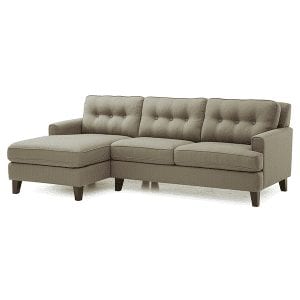So, you’ve found the perfect coffee table and can’t wait to bring it home.
But how can you be sure the rich, dark wood of your new table will fit in with your lighter-toned hardwood floor?
Today’s home decor is all about mixing and matching. The immaculately coordinated living or dining sets of yesteryear have given way to a one-of-a-kind blended style that’s uniquely yours.
And like most people, you probably didn’t buy all of your furniture at the same time. Instead, you likely have a mix of inherited and purchased items that you’ve acquired over the years. When you’re ready to buy a new piece, it has to look good with what you already have.
That makes combining different types of wood one of your top decorating priorities. While using only one type of wood might feel dull and boring, mixing different tones can be a challenge if you don’t have a lot of design experience.
Let’s go over a few easy tips for successfully combining different wood tones in any room in your home. Your goal is to create a pleasing variety in terms of color, style and texture while giving your space a cohesive, intentional look.
Identify Your Dominant Tone
In a room with more than one type of wood, your dominant tone is the one with the most visibility. It establishes the look and feel for the rest of your decor.
If you have a wood floor, that is your dominant tone. In rooms with other types of flooring, the dominant wood may be found in other large structural elements, such as built-in cabinets, fireplaces or window frames. Another place to look is the largest piece of furniture, such as a dining table, dresser, desk or bookshelf.
Once you’ve identified your dominant tone, you’ll want to select other wood tones that complement it for a well-blended overall look.
Match the Undertones
Most woods have a “color bias” of warm or cool. That’s what we mean by the undertones. For example, many unstained woods, such as walnut, white oak, cherry or maple, have warm undertones. Many varieties of wood take on cooler tones when stained, such as charcoal or bark.
A good strategy for your decor is to find a mix of warm and cool undertones that complement one another. Another helpful hint is to examine the individual “notes” of color within the grain of your dominant wood. You can then match that note with other furnishings or decorative accents in the room.
Finally, you may also wish to create an interesting contrast with an undertone by mixing warm and cool woods. This is your chance to beautifully pair that dark coffee table with your light wood floor.
Choose a Recurring Theme
While variety may be the spice of life, a little goes a long way when it comes to home decorating. Continuity creates a calming sense of unity and structure, giving your decor a more “finished” look.
Once you select a tone you’d like to use, create balance by evenly dispersing it throughout the space. A good rule of thumb is to repeat each wood tone twice. For example, look for a coffee table that matches the beams in your ceiling. Or choose a set of light accent chairs to complement a light wood floor.
Yet another way to inject continuity into your space is to pair woods with a different tone but a similar grain or finish. An example would be a table and chairs all in a matte or glossy finish.
Create a Pleasing Contrast
When you mix different wood tones, you want the contrast to look intentional and not accidental. Pairing closely matched wood tones gives your room a more streamlined look. Greater contrast, such as a light oak table with dark chairs, adds dimension and interest for a more dramatic impact. Another good way to balance different tones is to include a neutral piece, such as black, white or gray.
Other Helpful Hints
Last but not least, here are a few more suggestions for mixing woods in your home decor.
- Don’t get too crazy. Too many different looks can make a room look cluttered or disorganized. Instead, choose two or three tones that blend well together and place them strategically throughout the room.
- Go with the grain. Most wood items have a large or small grain. While the tone of your wood furniture may vary, pairing pieces with a similar grain helps to pull things together.
- Include “buffer” elements. Sometimes a wood table looks awkward when placed directly on a wood floor. The solution? Simply place a stylish rug on the floor to break up the visual space while tying the two elements together.
Are you trying to find that perfect new piece of furniture to add to your home decor? We invite you to visit Lifestyles Furniture. Our design experts will offer helpful ideas on pairing wood tones to update the look of any room in the house.
Stop by or contact us online at any time!



